Strictly Ballroom
7.2 /10 1 Votes
Country Australia | 7.2/10 IMDb Genre Comedy, Drama, Romance Duration Language English | |||||||||||||||||||||||||||||||||
 | ||||||||||||||||||||||||||||||||||
Release date 20 August 1992 (1992-08-20) (Australia) Writer Baz Luhrmann (original idea), Baz Luhrmann (earlier screenplay), Andrew Bovell (earlier screenplay), Baz Luhrmann (screenplay), Craig Pearce (screenplay) Initial release August 20, 1992 (Australia) Screenplay Baz Luhrmann, Craig Pearce Cast (Scott Hastings), (Fran), (Barry Fife), (Shirley Hastings), (Liz Holt), (Les Kendall) Similar movies Interstellar , The Godfather , The Discovery of Heaven , The Amazing Spider-Man , The Judge , E.T. the Extra-Terrestrial Tagline A life lived in fear... ...is a life half lived | ||||||||||||||||||||||||||||||||||
Strictly ballroom 1992 trailer hq
Strictly Ballroom is a 1992 Australian romantic comedy film directed and co-written by Baz Luhrmann. The film, Luhrmann's début, is the first in his The Red Curtain Trilogy of theatre-motif-related films; it was followed by Romeo + Juliet and Moulin Rouge!.
Contents
- Strictly ballroom 1992 trailer hq
- Strictly ballroom 1992 trailer vhs capture
- Plot
- Style
- Production history
- Box office
- Awards
- Music
- Musical
- References

Strictly Ballroom is based on a critically acclaimed stage play originally set up in 1984 by Luhrmann and fellow students while he was studying at the National Institute of Dramatic Arts in Sydney. An expanded version of the play became a success at the Czechoslovakian Youth Drama Festival in Bratislava in 1986, and in 1988 it made successful season at Sydney's Wharf Theatre, where it was seen by Australian music executive Ted Albert and his wife Antoinette. They both loved it, and when Ted Albert soon after set up the film production company M&A Productions with ex-Film Australia producer Tristram Miall, they offered Luhrmann to transform his play into a film. He agreed on the condition that he would also get to direct it.
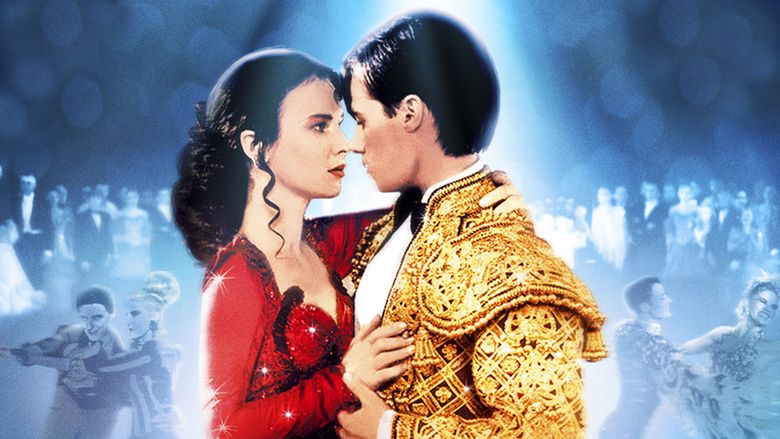
Strictly ballroom 1992 trailer vhs capture
Plot
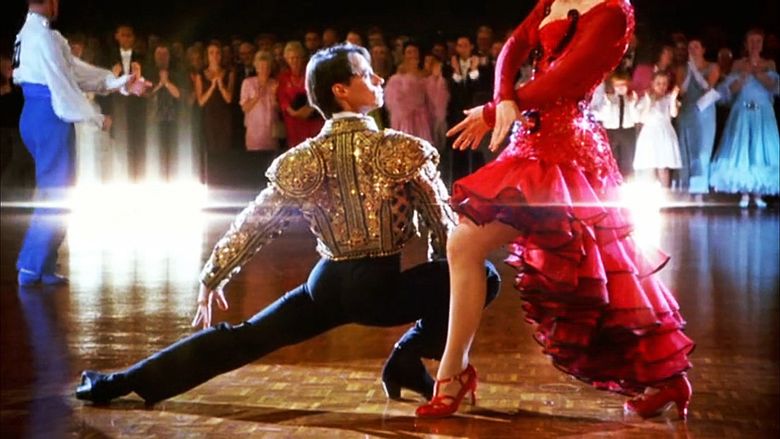
Strictly Ballroom tells the story of an Australian ballroom dancer, Scott Hastings (Paul Mercurio), and his struggle to establish his personal style of dance on his way to win the Pan-Pacific Grand Prix Dancing Championship. Scott's steps are not strictly ballroom. Scott comes from a family with a history of ballroom dancing and has been training since childhood. Scott's mother Shirley teaches ballroom dancing, and his father Doug meekly handles maintenance chores at the dance studio.
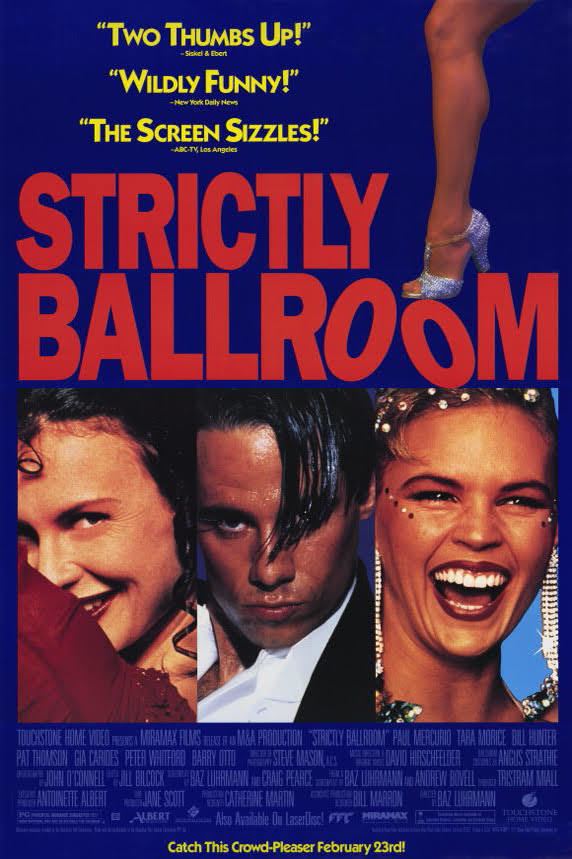
After losing a competition to a rival pair, because Scott started dancing his own steps, his dancing partner Liz Holt (Gia Carides) leaves him for the rival male, Ken Railings, after his partner Pam Short breaks both her legs in a car accident. With only weeks before the next Pan-Pacific competition, try-outs begin to find Scott a new dance partner but, unknown to his parents, Scott secretly begins rehearsing with frumpy outsider Fran (Tara Morice), a beginner dancer at his parents' studio.
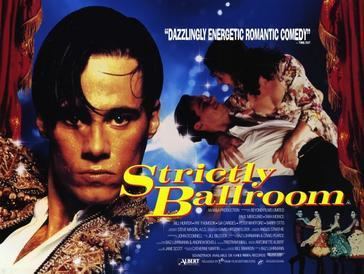
Scott is initially sceptical, but when Fran introduces pasodoble steps into their routine, Scott realises her potential. He walks her home one night and finds her Spanish family living in a tiny home next to the railway tracks, where Fran's family show him the authentic Spanish pasodoble style. As their rehearsals progress, Fran grows more attractive and self-confident. A few days before the Pan-Pacifics, Fran's family decide they are ready to dance pasodoble. Scott and Fran are walking together and talking until they kiss, as they were already in love.

When Scott returns to the dance studio, he finds Barry Fife, the conniving president of the Australian Dancing Federation who proceeds to tell him "the truth" about his parents, Doug and Shirley — they too were ballroom dancing champions, especially his father, until they lost the Pan-Pacific Grand Prix because of Doug's self-obsession and unorthodox dance steps. According to Barry losing the contest left Doug a broken man, sustained by the hope that one day his son would learn from his father's mistakes and win the Grand Prix. Scott is convinced to dance with Liz instead of Fran so he can win "for his father's sake". However, this is later revealed as a lie, part of Barry's plot to fix the competition so Scott and Liz will lose. Scott starts training with Liz, while a heart-broken Fran goes back to the beginners' class.
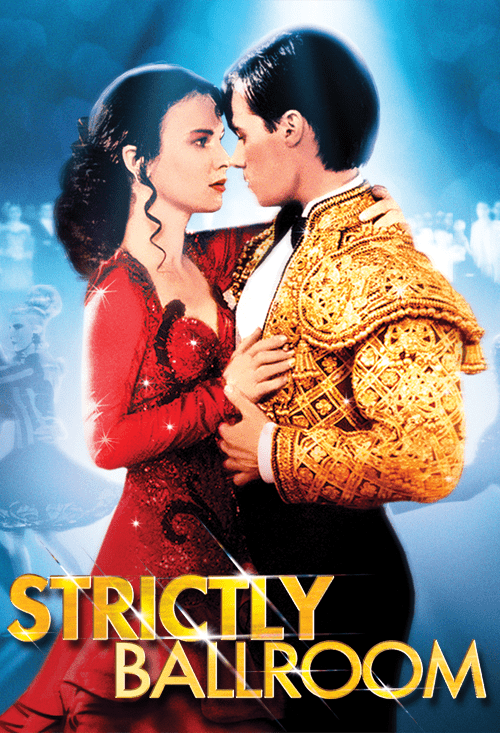
At the Pan-Pacific Grand Prix, Scott's friend Wayne Burns and his partner Vanessa Cronin overhear Fife talking to Ken and his partner Tina Sparkle saying that they will win no matter what. Wayne tells Les Kendall (Ken's coach, Doug and Shirley's friend and one of the judges) who then confronts Fife about it. Meanwhile, Doug finally manages to pull Scott aside and tells him the real story — Doug never danced at the competition because Barry convinced Shirley the only way to win was to dance the conventional steps with Les, but Shirley and Les lost the contest anyway. After hearing his father's revelation, Scott finds Fran and asks her to dance with him. Fife tries to cut the music and stop them from dancing but Scott's sister Kylie and her partner Luke (from the children's division) interfere until Fife's loyal companion Charm Leachman cuts the music. Fife then disqualifies them, but Doug, along with Fran's family, claps out a beat which encourages Scott and Fran to "dance from the heart", drawing cheers from the crowd and tears of joy from Doug. Finally Liz, having had a change of heart, turns on Barry and Leachman and restores the music. The couple's spirited dancing brings down the house. Doug asks Shirley to dance with him and the whole audience joins them on the floor. As the performance finishes, Scott and Fran kiss, the competition forgotten, as it was never about winning or losing.
Style
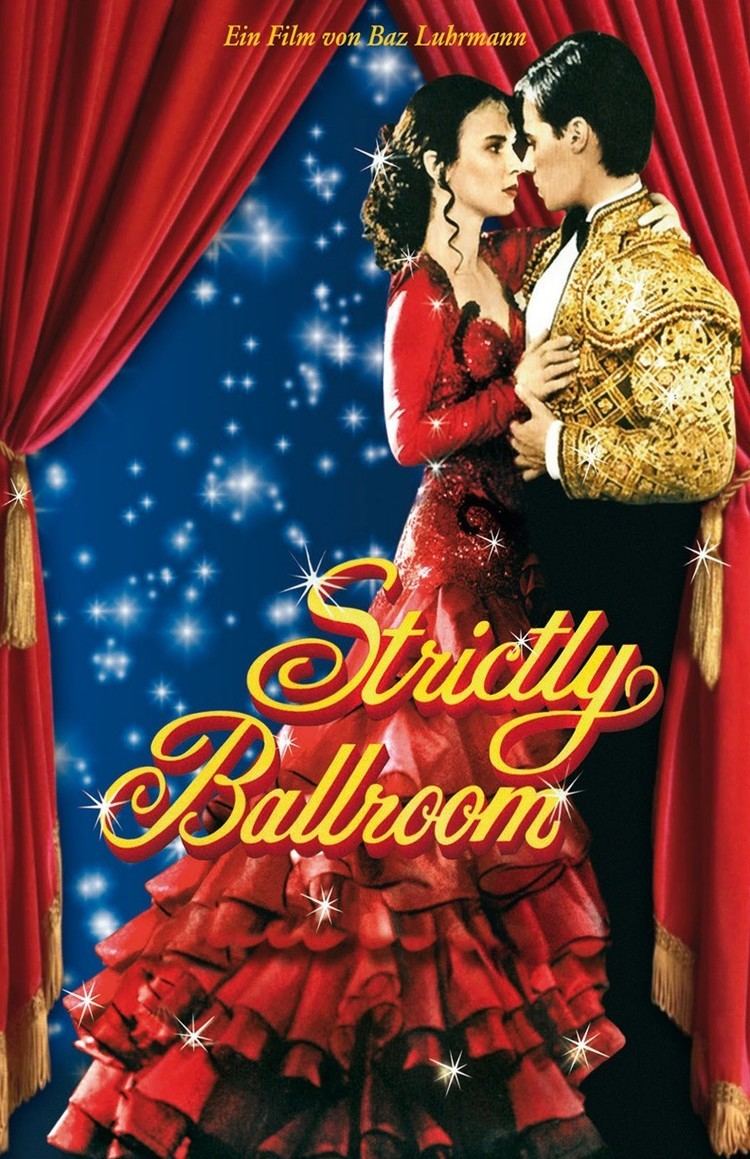
The film plays with clichés and stereotypes, mocking and embracing them at the same time. Luhrmann has also commented that the film revolves around stories similar to David and Goliath, Cinderella and The Ugly Duckling.
Production history

The film version of Strictly Ballroom was developed from an original short play of the same name. It drew on Luhrmann's own life experience—he had studied ballroom dancing as a child and his mother worked as a ballroom dance teacher in his teens and inspired by the life of Keith Bain (who grew up in the same town as Luhrmann). While studying at NIDA in the early 1980s, Luhrmann and a group of fellow students devised a short comedy-drama set in the cutthroat world of competitive ballroom dancing. This original 1984 NIDA production was a critical success and, after graduating, Luhrmann was invited to re-stage the play for the Czechoslovakian Youth Drama Festival in Bratislava in 1986. He invited his school friend Craig Pearce to help him rewrite and expand the script. With its themes of artistic repression and underdogs battling against the odds, the play was a success at the festival, winning both the best director and best production awards.

This led Luhrmann to direct more theatre productions back in Australia, and in 1988, as part of the Australian Bicentenary celebrations, the Sydney Theatre Company invited him to establish an experimental theatre ensemble, Six Years Old, which took up a residency at The Wharf Theatre for that year. Alongside Luhrmann and Pearce, the new company included one of the original NIDA collaborators, actor Catherine McClements, plus production designer Catherine Martin (whom Luhrmann subsequently married), set dresser Bill Marron and costume designer Angus Strathie, all of whom went on to collaborate with Luhrmann on his films. The group work-shopped the expanded version of play, which had a trial season at the Brisbane Expo in 1988 before opening at the Wharf Studios on 24 September 1988.
During its successful run at the Wharf, the play was seen by an influential Australian music executive. Ted Albert was a leading record producer and music publisher, best known in Australia as the discoverer and original producer of 1960s pop sensations The Easybeats. By the time he saw Strictly Ballroom, Albert was the managing director of his family-owned music publishing company Albert Music (formerly J. Albert & Sons) and its subsidiary, the highly successful record label Albert Productions, which scored a string of hits in the 1970s and 1980s with acts including John Paul Young and AC/DC.
Albert's wife Antoinette (known as "Popsy") took him to see the play after seeing a newspaper ad; they loved the energy, colour and musicality of the play and Ted Albert immediately saw the potential to develop the play into a film using the musical resources available to him through Alberts' publishing and recording enterprises. Soon after, Ted set up the film production company M&A Productions with ex-Film Australia producer Tristram Miall; they tracked Luhrmann down through NIDA and approached him with the offer to transform his play into a movie. In its early stages, with the involvement of writer Andrew Bovell, the script took a more serious tone, including a subplot set around the trade union at the BHP steelworks in the industrial city of Newcastle. Luhrmann balked at the move towards naturalism and eventually, with Albert's agreement, the director brought in his old friend Craig Pearce, who was able to translate Luhrmann's theatrical vision into a workable screenplay.
The producers had difficulty in securing funding for the project, which mostly featured a cast of newcomers. The only "bankable names" in the cast were Barry Otto and screen veteran Bill Hunter, and although co-star Paul Mercurio was well known as a dancer through his work with the Sydney Dance Company, Strictly Ballroom was his first acting role. With the original budget set at over AUD 5 million, government film funding bodies were reluctant to back such a left-field project with few major names in the credits. The script was then pared back and the subplot dropped, but when Miall approached the Film Finance Corporation, he was told that they would not back such a high-budget film (in Australian terms) with a first-time director. He was told to replace Luhrmann, but he refused, promising to make further cuts. Miall and Albert then pared the budget down to AUD 3.3 million and the FFA then agreed to provide around 65%, on condition that the producers were able to raise the remaining AUD 1 million and secure a local distributor. They sent Luhrmann to the Cannes Film Festival in hopes of finding an overseas distributor, but this came to nothing. After returning to Australia, Miall and Luhrmann had a fortuitous meeting with Andrew Pike, head of the Canberra-based independent distribution company Ronin Films. Intrigued by Luhrmann's colourful pitch which involved sketches, set miniatures and pieces of costume, Pike agreed to back a limited local release, although he later admitted that, had he seen only the script, he would probably have turned it down.
Although the FFC funding was now in the pipeline, the production faced its most serious challenge when, on 11 November 1990, Ted Albert died suddenly from a heart attack (the film is dedicated to him). This threw the entire project into doubt, but Ted Albert's widow Popsy decided that it should go to completion in honour of her husband, so she took over as executive producer, with Miall as producer. With her blessing, Ted's family company Albert Music invested AUD 1 million, with the remaining AUD 300,000 sourced from private investors. Even after completion, the team were greeted with stiff resistance from exhibitors: Luhrmann recalled that one exhibitor walked out before the film had even finished, declaring that Luhrmann was ruined and that he would never work again.
The film was accepted for the Cannes Film Festival, but another tragedy struck just before its first screening—actress Pat Thomson, who played Scott's mother, was diagnosed with cancer and she died in April 1992, only one month before its Cannes world premiere in May. Strictly Ballroom had its first public screening at midnight in the Un Certain Regard programme and proved to be an instant hit—the cast and crew received a fifteen-minute standing ovation, which was repeated the following night; it became one of the major hits of the festival, winning the Prix De Jeunesse and triggering a bidding war among international distributors.
It was a huge success when released in Australia in August, and it swept the field at the 1992 AFI awards, gaining 13 nominations and winning in eight major categories. It was also a major success at the 1993 BAFTA awards, gaining eight nominations and winning three awards for 'Best Costume Design', 'Best Original Film Score' and 'Best Production Design'. Other major accolades included a 1994 Golden Globe nomination for Best Picture, 'Newcomer of the Year' at the 1993 London Critics Circle Film Awards, the 'People's Choice' award at the 1992 Toronto International Film Festival and 'Most Popular Film' at the 1992 Vancouver International Film Festival.
Box office
Strictly Ballroom grossed AUD 21,760,400 at the box office in Australia, and a further USD 11,738,022 in the United States. Worldwide, it eventually took AUD 80 million at the box office, making it one of the most successful Australian films of all time.
Awards
Music
Among the songs featured on the soundtrack are:
Both "The Blue Danube" and "Time After Time" were played in the 1984 and 1986 Strictly Ballroom stage productions.
Musical
In May 2011, it was announced that Strictly Ballroom would be adapted into a stage musical and premiere at the Sydney Lyric theatre. It premiered on 12 April 2014. The production moved to Her Majesty's Theatre, Melbourne in January 2015, and the Lyric Theatre, QPAC in Brisbane in September 2015.
The show received its British premiere on 30 November 2016 at the West Yorkshire Playhouse in Leeds. The show had its North American premier in Toronto at the Princess of Wales Theatre on 25 April 2017.
References
Strictly Ballroom WikipediaStrictly Ballroom IMDb Strictly Ballroom themoviedb.org
